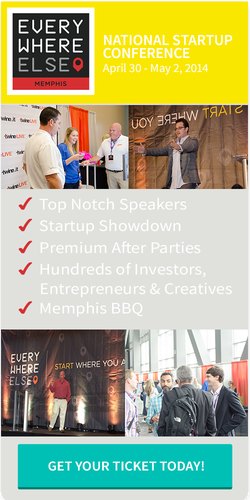
 Last year, three friends and I decided to make the plunge and embark onto the journey of building our tech startup GreenPal. At the time, none of us knew how to code or design a product. The only strengths we really had were a great idea and strong work ethic.
Last year, three friends and I decided to make the plunge and embark onto the journey of building our tech startup GreenPal. At the time, none of us knew how to code or design a product. The only strengths we really had were a great idea and strong work ethic.
Over the course of a year’s time, two of my cofounders taught themselves how to code; one taught himself Photoshop, and I learned a full stack of digital marketing skills. We knew that we would need to become a dynamic self-sustaining team because we simply couldn’t afford to outsource any of these needs; we were bootstrapping our way through our journey.
Bootstrapping may not be feasible for some startups. I believe it will depend on the product idea, its complexity and development difficulty, and its founders’ personal life situation. Needless to say, it’s much easier for two young hackers in their mid-twenties without kids or house payments to bootstrap compared to founders in their thirties who might be have these obligations to service while starting their company.
With that being said, I am a still a proponent that in most cases, tech startups should bootstrap (funding the company out the founder’s pockets) for as long as absolutely possible. My reasoning is based on several principles:
Discipline:
A lack of capital forces efficiency. This forced function requires a startup to make small, meaningful experiments with their own money. A startup burning their own cash will make smarter bets and will measure the outcomes of these bets intensively. Return on investment from the implementation of a new feature, or your Google Adwords spend, and the ROI of outsourced talent for example, will be under a more intense scrutiny when the founders’ cash is being burned. In a startup, capital preservation and measurement of everything, every decision and every expenditure is critical. Scarcity forces these not-so- fun disciplines.
Pain, Sacrifice, and Commitment:
It’s uninspiring to see an entrepreneur burn all of his angel money on a pipe dream. He might have made tighter, more thoughtful decisions and measured his progress better if he had been burning his own cash along the way. Especially in the beginning, when it’s their money, they will make more sacrifices, put in longer hours, put in work on Saturdays and maybe even Sundays when it’s their chips on the table.
When inventing a product an entrepreneur must build quickly and cheaply, measure, and learn. This takes endless hours of commitment. When it’s their money, they will be more inclined to make the sacrifices to commit the time. Time is the blunt object that an entrepreneur can use to break down the walls that stand in the way of your success.
Validated Learning and Team Growth:
With constrained resources (the startups’ own money) they will be forced to do everything themselves, and that’s good because it’s the only way to learn. Alternatively, when funded by outside investor money, the team might be tempted to outsource needs like design, development, SEO, sales etc. When the team is forced to self-execute these disciplines, the start up will grow in that process, creating a group of ruthless warriors that can and will do anything to succeed.
Once entrepreneurs start scaling their team, founders can say, “I’ll never ask you to do anything I haven’t done myself.” More importantly, the team will know what kind of potential team-mates they are looking for. It is infinitely easier to make a solid hire when the core team is proficient in the skill sets that candidates will need to have.

Dilution and Control:
Lastly, when a startup defers seed capital as long as absolutely possible (or ever at all); they preserve their most valuable asset, their founder equity. Challenging the team to defer outside capital and establish traction and problem market fit on its own dime, and challenging the team to monetize day one will allow it to raise funds further down the road at a much higher valuation and less founder equity dilution. The team will also preserve more control. Some angel investors are helpful, but sometimes they can be illogical and overbearing. Bootstrapping ensures the team can side step this potential headache and distraction.
Raising angel/seed capital is relatively easy. With a smart team, a good idea, and a big market, there will have no problem raising angel/seed capital. The reality is, that sometimes, I observe teams burn a year, along with a substantial sum of seed money, and the only progress is the validated leaning that the co-founders have acquired in that time. Unfortunately, in many instances that same learning could have been acquired bootstrapping along that while way. Yes it’s tougher, and a lot less fun, but it makes for a stronger foundation and a team that owns more of their company.
Lastly, I will share a quotation I read on Paul Gram’s blog that I feel embodies bootstrapping: “The best way to do something ‘lean’ is to gather a tight group of people, give them very little money, and very little time.”- Bob Klein, chief engineer of the F-14 program.
Bryan Clayton is a serial entrepreneur and co-founder of GreenPal



 Last year, three friends and I decided to make the plunge and embark onto the journey of building our tech startup
Last year, three friends and I decided to make the plunge and embark onto the journey of building our tech startup 